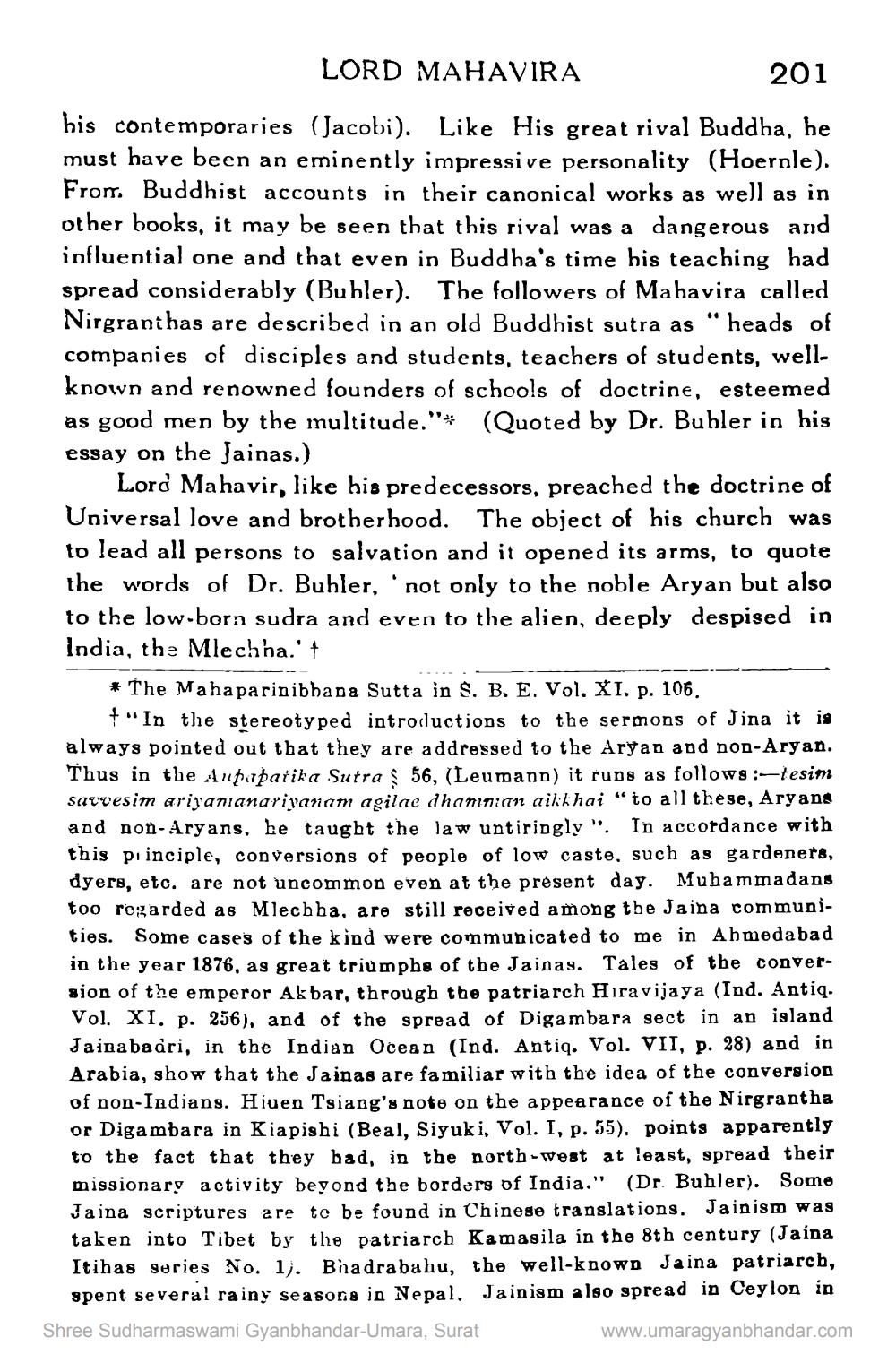________________
LORD MAHAVIRA
201
his contemporaries (Jacobi). Like His great rival Buddha, he must have been an eminently impressive personality (Hoernle). From Buddhist accounts in their canonical works as well as in other books, it may be seen that this rival was a dangerous and influential one and that even in Buddha's time his teaching had spread considerably (Buhler). The followers of Mahavira called Nirgrant has are described in an old Buddhist sutra as "heads of companies of disciples and students, teachers of students, wellknown and renowned founders of schools of doctrine, esteemed as good men by the multitude."* (Quoted by Dr. Buhler in his essay on the Jainas.)
Lord Mahavir, like his predecessors, preached the doctrine of Universal love and brotherhood. The object of his church was to lead all persons to salvation and it opened its arms, to quote the words of Dr. Buhler, not only to the noble Aryan but also to the low-born sudra and even to the alien, deeply despised in India, the Mlechha.' t
*The Mahaparinibbana Sutta in S. B. E. Vol. XI. p. 106.
"In the stereotyped introductions to the sermons of Jina it is always pointed out that they are addressed to the Aryan and non-Aryan. Thus in the Aupapatika Sutra $ 56, (Leumann) it runs as follows:-tesim savvesim ariyamanariyanam agilae dhamman aikkhai "to all these, Aryans and non-Aryans, he taught the law untiringly ". In accordance with this principle, conversions of people of low caste, such as gardeners, dyers, etc. are not uncommon even at the present day. Muhammadans too regarded as Mlechha. are still received among the Jaina communities. Some cases of the kind were communicated to me in Ahmedabad in the year 1876, as great triumphs of the Jainas. Tales of the conversion of the emperor Akbar, through the patriarch Hiravijaya (Ind. Antiq. Vol. XI. p. 256), and of the spread of Digambara sect in an island Jainabadri, in the Indian Ocean (Ind. Antiq. Vol. VII, p. 28) and in Arabia, show that the Jainas are familiar with the idea of the conversion of non-Indians. Hiuen Tsiang's note on the appearance of the Nirgrantha or Digambara in Kiapishi (Beal, Siyuki, Vol. I, p. 55), points apparently to the fact that they had, in the north-west at least, spread their missionary activity beyond the borders of India." (Dr. Buhler). Some Jaina scriptures are to be found in Chinese translations. Jainism was taken into Tibet by the patriarch Kamasila in the 8th century (Jaina Itihas series No. 1). Bhadrabahu, the well-known Jaina patriarch, spent several rainy seasons in Nepal, Jainism also spread in Ceylon in Shree Sudharmaswami Gyanbhandar-Umara, Surat
www.umaragyanbhandar.com




